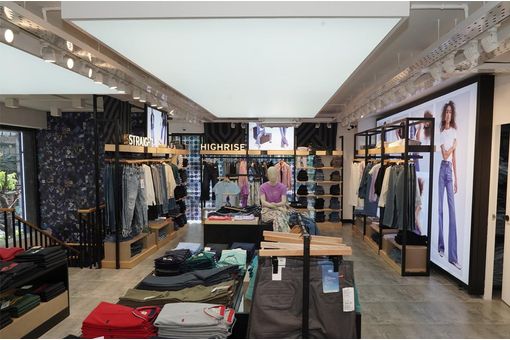Interviews
Apparel industry tied up in knots
28 Jun '08
5 min read
The apparel sector is important to Haiti's economy. It is a small but resilient industry. The industry maintains manufacturing ties with the Dominican Republic and relies on the United States as a key export market for apparel.
Haiti offers competitive wages and an ample labor pool. Haiti's product quality, productivity, and pricing are considered to be generally similar to apparel produced in the rest of the region, but its products tend to be more standardized and lower-priced.
Established since several decades, Haiti's apparel industry has experienced cycles of growth and contraction. The industry consisted of more than 100 firms and over 100,000 employees in the late 1980s.
A U.N. trade embargo mandated in 1994 led to a downturn in Haitian apparel production. After the trade embargo was lifted in October 1994, Haiti's apparel sector rebounded.
The subsequent abolition of quotas allowed lower cost suppliers such as China, India, and other Asian countries to boost their exports of clothing to the United States, thereby increasing competition for Haiti and other suppliers in the CBERA and CAFTA-DR region.
Most midsized plants of 300-400 employees closed, and in 2007, Haiti's apparel industry had fewer than 20 firms and only about 15,000 to 18,000 employees.
There is only a handful of apparel companies that are doing relatively well most of them based out of the capital Port-au-Prince, such as Multi-tex, the Apaid Group, and Sohacosa, which have been producing garments for U.S. and Canadian apparel companies for several years.
Despite the contraction of Haiti's apparel sector, the number of workers involved in production increased by 28 percent during 2004-2006 and by 15 percent in January-June 2007 over the same period in 2006.
The Haitian garment industry mainly supplies mass-produced commodity knit products with simple stitching work such as t-shirts and sweatshirts, although woven products (e.g., pants, shirts, and suits) account for about 20 percent of total apparel output.
A few U.S. apparel producers and retailers such as Hanesbrands, Russell, and Target, along with a Canadian apparel producer, Gildan, began importing apparel from Haiti to diversify their sourcing, especially as production costs rose in neighboring Caribbean and Central American countries.
Because of Haiti's limited water supply and underdeveloped infrastructure, its apparel sector lacks washing and finishing operations. Apparel sewn in Haiti is sent to the Dominican Republic for washing and finishing and then shipped back to Haiti before being exported to the United States in order to benefit from the HHOPE (Haitian Hemispheric Opportunity through Partnership Encouragement)Act.
The available electricity is insufficient to run apparel manufacturing operations and further hinders Haitian apparel production. Haitian manufacturers need to invest in generators. The costs to purchase and maintain generators and fuel reportedly reduce their competitiveness in international markets.
Haiti offers competitive wages and an ample labor pool. Haiti's product quality, productivity, and pricing are considered to be generally similar to apparel produced in the rest of the region, but its products tend to be more standardized and lower-priced.
Established since several decades, Haiti's apparel industry has experienced cycles of growth and contraction. The industry consisted of more than 100 firms and over 100,000 employees in the late 1980s.
A U.N. trade embargo mandated in 1994 led to a downturn in Haitian apparel production. After the trade embargo was lifted in October 1994, Haiti's apparel sector rebounded.
The subsequent abolition of quotas allowed lower cost suppliers such as China, India, and other Asian countries to boost their exports of clothing to the United States, thereby increasing competition for Haiti and other suppliers in the CBERA and CAFTA-DR region.
Most midsized plants of 300-400 employees closed, and in 2007, Haiti's apparel industry had fewer than 20 firms and only about 15,000 to 18,000 employees.
There is only a handful of apparel companies that are doing relatively well most of them based out of the capital Port-au-Prince, such as Multi-tex, the Apaid Group, and Sohacosa, which have been producing garments for U.S. and Canadian apparel companies for several years.
Despite the contraction of Haiti's apparel sector, the number of workers involved in production increased by 28 percent during 2004-2006 and by 15 percent in January-June 2007 over the same period in 2006.
The Haitian garment industry mainly supplies mass-produced commodity knit products with simple stitching work such as t-shirts and sweatshirts, although woven products (e.g., pants, shirts, and suits) account for about 20 percent of total apparel output.
A few U.S. apparel producers and retailers such as Hanesbrands, Russell, and Target, along with a Canadian apparel producer, Gildan, began importing apparel from Haiti to diversify their sourcing, especially as production costs rose in neighboring Caribbean and Central American countries.
Because of Haiti's limited water supply and underdeveloped infrastructure, its apparel sector lacks washing and finishing operations. Apparel sewn in Haiti is sent to the Dominican Republic for washing and finishing and then shipped back to Haiti before being exported to the United States in order to benefit from the HHOPE (Haitian Hemispheric Opportunity through Partnership Encouragement)Act.
The available electricity is insufficient to run apparel manufacturing operations and further hinders Haitian apparel production. Haitian manufacturers need to invest in generators. The costs to purchase and maintain generators and fuel reportedly reduce their competitiveness in international markets.
Popular News
































-Ltd..jpg?tr=w-120,h-60,c-at_max,cm-pad_resize,bg-ffffff)





.jpg?tr=w-120,h-60,c-at_max,cm-pad_resize,bg-ffffff)
.jpg?tr=w-120,h-60,c-at_max,cm-pad_resize,bg-ffffff)






